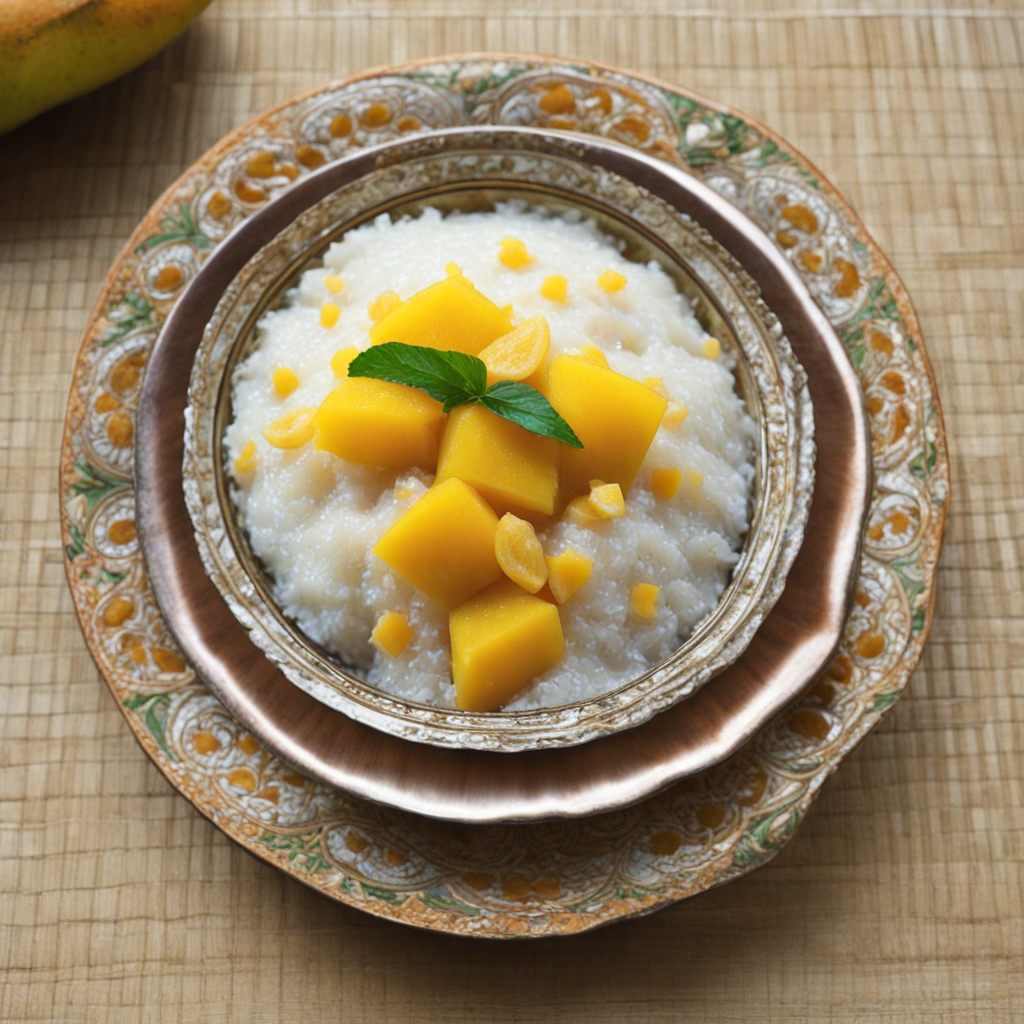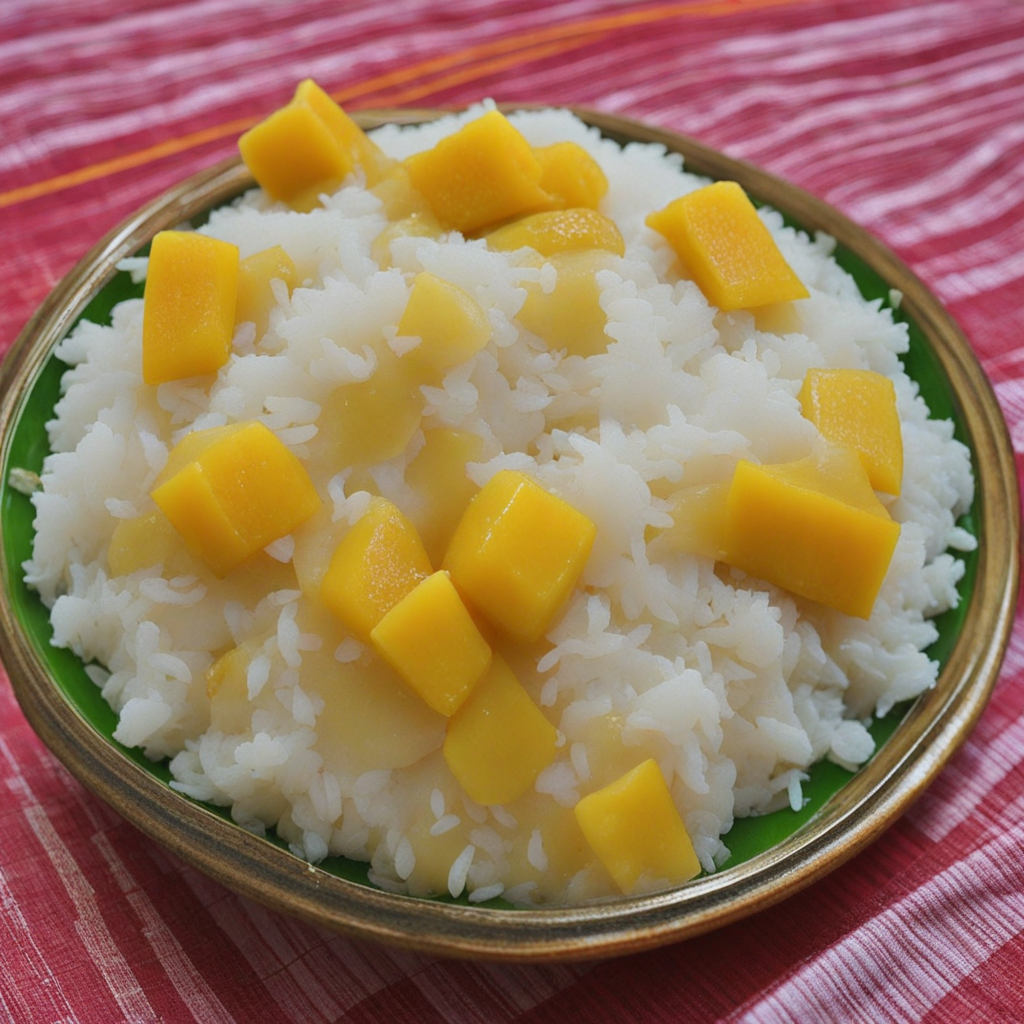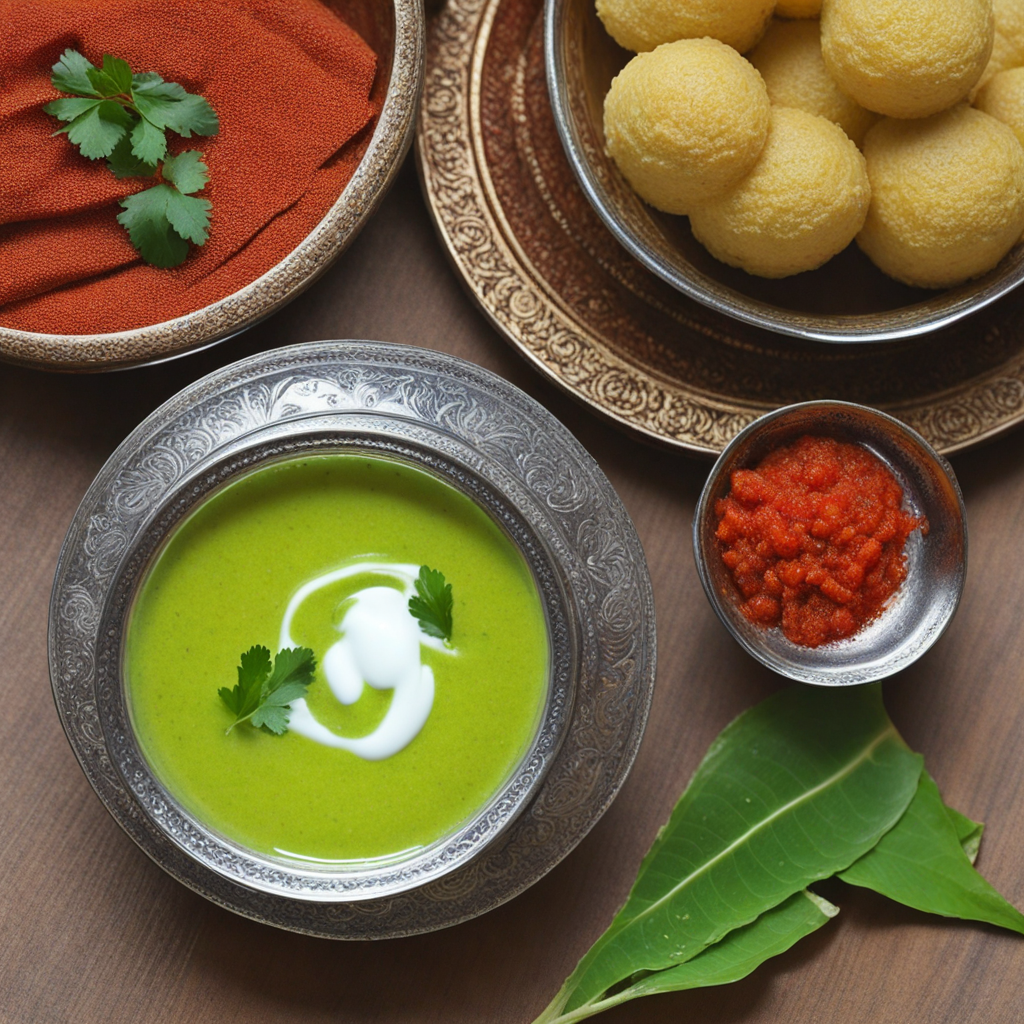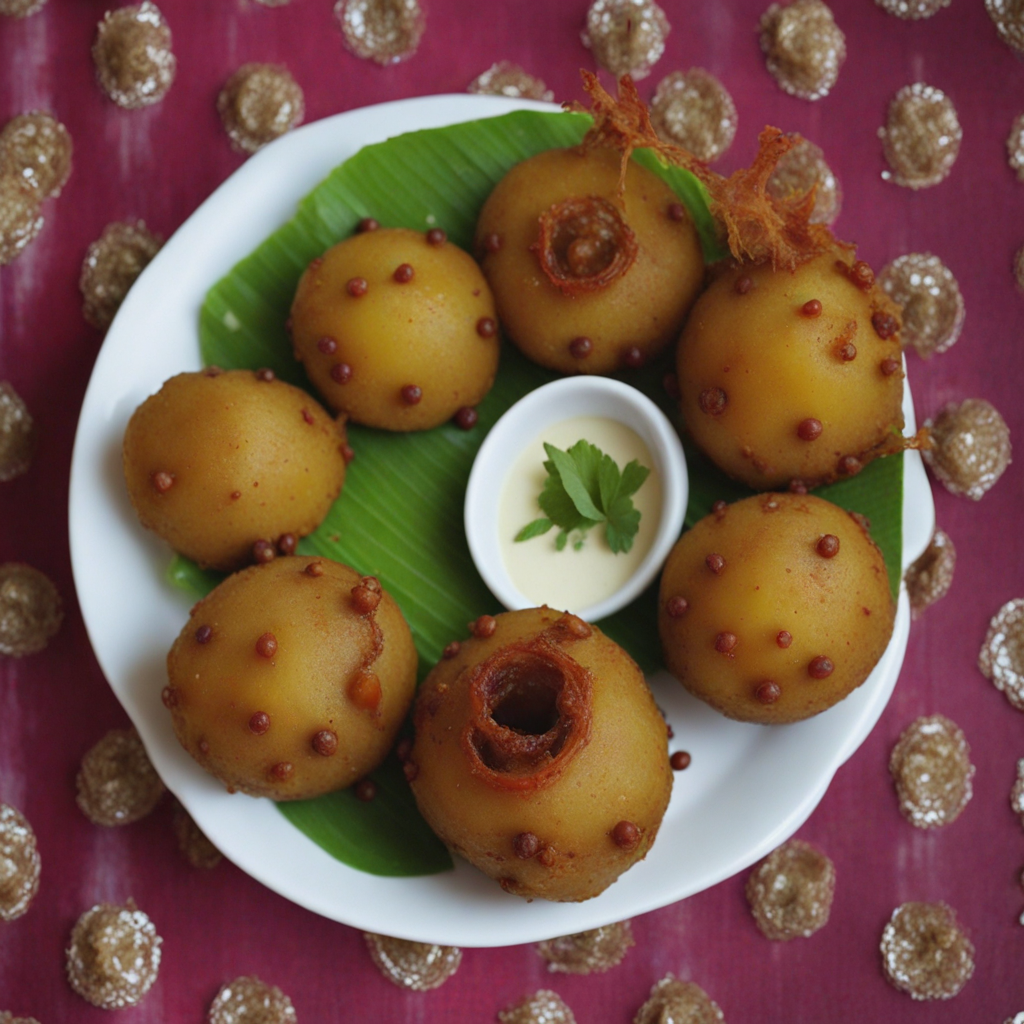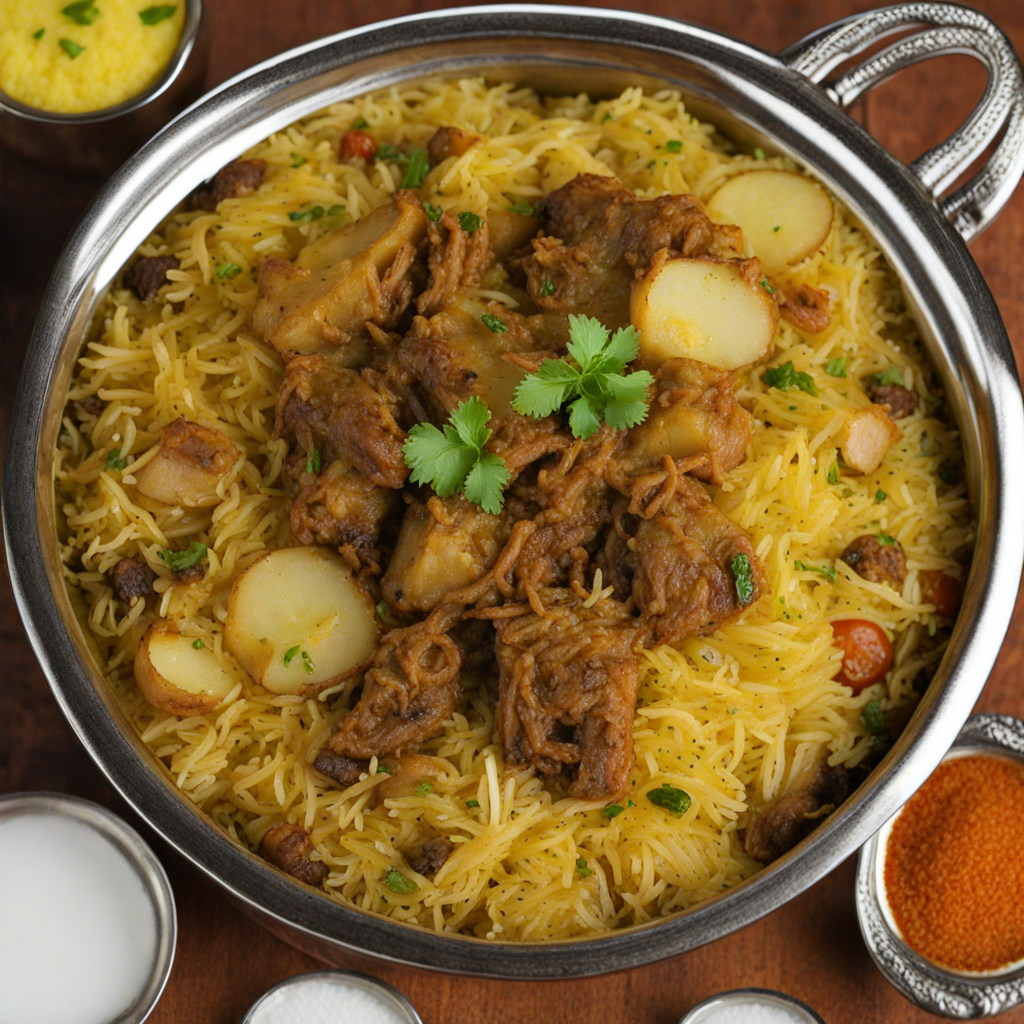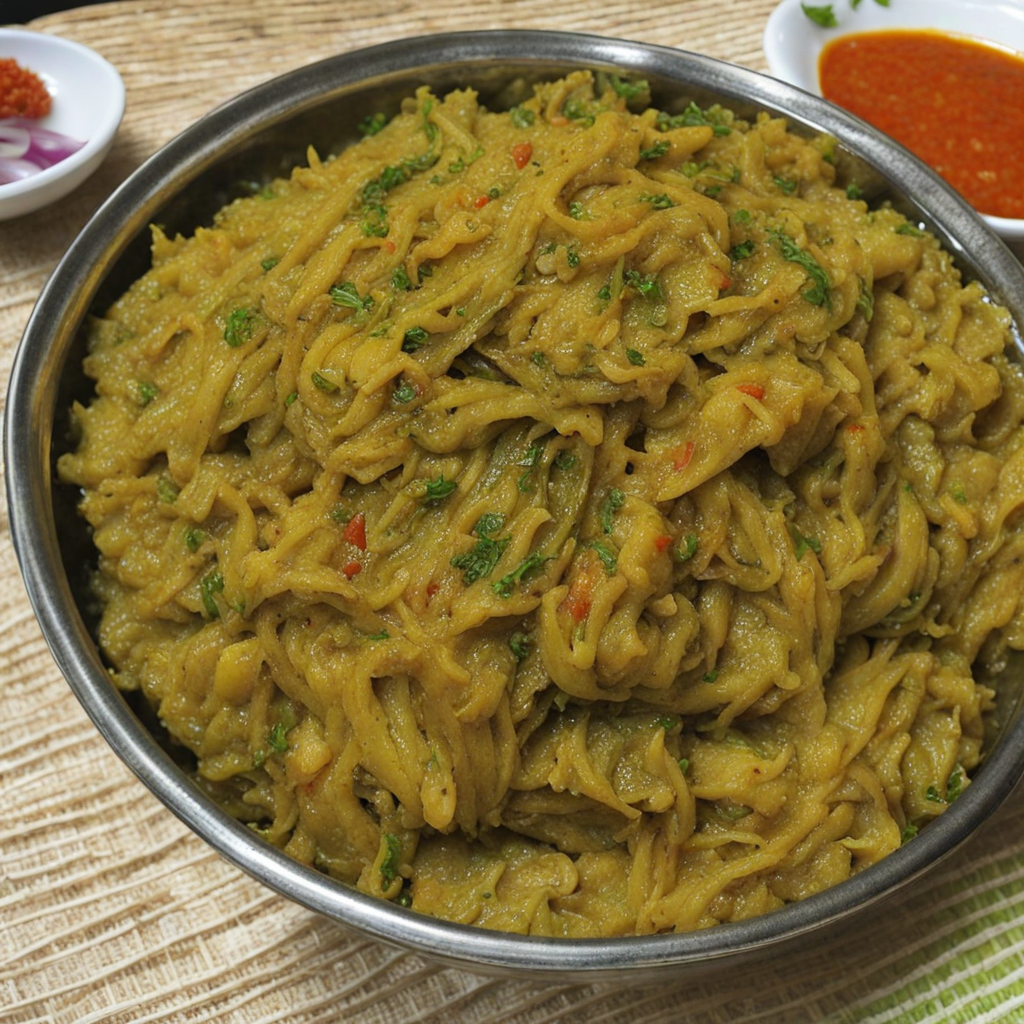Doi Chira
Doi Chira is a traditional Bangladeshi dish that beautifully blends the tartness of yogurt with the subtle sweetness of flattened rice, known as chira. This delightful concoction typically features a base of soft, creamy yogurt, which is generously mixed with chira, offering a unique texture that is both light and satisfying. The dish is often enhanced with a sprinkling of jaggery or sugar to balance the tanginess of the yogurt, creating a harmonious flavor profile that is both refreshing and indulgent. To elevate the experience, Doi Chira is often adorned with an array of toppings such as sliced bananas, fresh fruits, or nuts, adding layers of taste and crunch. The fruits provide a juicy contrast to the creamy yogurt, while nuts contribute a rich, earthy flavor that deepens the overall taste. This dish is not only a feast for the palate but also a visual delight, inviting you to dive into its vibrant colors and textures. Enjoyed commonly as a breakfast item or a light snack, Doi Chira carries a cultural significance in Bangladeshi households, often enjoyed during festive occasions or family gatherings. Its simplicity and versatility make it an ideal choice for those seeking a quick yet delicious meal. Whether you savor it as a comforting morning ritual or a refreshing afternoon treat, Doi Chira promises an unforgettable taste of Bangladeshi cuisine that will leave you craving more.
How It Became This Dish
The History of Doi Chira: A Culinary Tradition from Bangladesh Doi Chira, a beloved delicacy of Bangladesh, embodies the rich tapestry of the nation’s culinary history. A harmonious blend of yogurt (doi) and flattened rice (chira), this dish not only tantalizes the taste buds but also resonates deeply with the cultural and historical narratives of the Bengali people. To understand Doi Chira is to delve into the very essence of Bangladeshi cuisine, reflecting agricultural practices, communal values, and the socio-economic landscape of the region. Origins of Doi Chira The origins of Doi Chira can be traced back to the agricultural practices of ancient Bengal, which is now modern-day Bangladesh and parts of India. The fertile delta, nourished by the Ganges, Brahmaputra, and Meghna rivers, allowed for the cultivation of rice, which became a staple food. Flattened rice, or chira, is a traditional method of processing rice that dates back centuries. By parboiling rice and then flattening it, the grain becomes lightweight, portable, and easily digestible. This technique was particularly beneficial for the rural population, who often needed a quick and nourishing meal. Yogurt, or doi, is another age-old creation, with its roots in the domestication of cattle in the Indian subcontinent. The process of fermenting milk into yogurt is thought to have been discovered over 4,000 years ago, making it a significant part of the diet in this region. The marriage of doi and chira likely arose from the necessity of creating a nutritious meal that could be prepared quickly and consumed on the go, especially for farmers and laborers in the fields. Cultural Significance Doi Chira holds immense cultural significance in Bangladeshi society. It is more than just a dish; it is a symbol of hospitality and communal sharing. Traditionally, it is prepared during festivals, family gatherings, and special occasions. It often serves as a part of the breakfast ritual, providing a wholesome start to the day. The simplicity of the ingredients—flattened rice, yogurt, sugar, and sometimes fruits or nuts—makes it accessible, while its creamy texture and gentle sweetness create a comforting experience. In rural areas, it is common for families to prepare Doi Chira during the harvest season, celebrating the fruits of their labor. The dish acts as a reminder of the agrarian roots of Bengali culture and the communal spirit that underpins it. In many households, it is often served alongside other traditional foods, creating a feast that brings people together, reinforcing family bonds and communal ties. Moreover, Doi Chira often accompanies significant life events, from weddings to religious festivals. During Eid, for example, families prepare large quantities of Doi Chira to share with neighbors and friends, embodying the spirit of giving and togetherness. The dish is also a favored offering during pujas and other religious ceremonies, symbolizing purity and abundance. Development Over Time Over the centuries, Doi Chira has evolved, adapting to the changing tastes and lifestyles of the Bengali people. In the early days, the dish would have been quite simple—consisting primarily of yogurt and chira, perhaps sweetened with jaggery or sugar. As trade routes expanded and ingredients became more accessible, variations began to emerge. The influence of Persian cuisine, brought by traders and later by the Mughal Empire, introduced new flavors and textures. Ingredients such as cardamom, saffron, and dried fruits became popular additives, enhancing the dish’s complexity. Today, it is not uncommon to find Doi Chira garnished with a variety of toppings, including seasonal fruits like bananas, mangoes, or coconut, elevating its taste and nutritional profile. The urbanization of Bangladesh in the 20th century also played a role in transforming Doi Chira. With more people moving to cities and leading busier lifestyles, the need for quick, nutritious meals became more pronounced. Doi Chira, with its ease of preparation and portability, became a popular choice among urban dwellers. Street vendors began selling it in various forms, catering to a fast-paced lifestyle while preserving its essence. In recent years, the health-conscious movement has further influenced the dish. As awareness of nutrition and dietary preferences grows, variations of Doi Chira have emerged, incorporating yogurt alternatives, organic sweeteners, and additional superfoods. The dish has remained relevant, showcasing its adaptability to contemporary tastes while retaining its traditional roots. Conclusion Doi Chira is more than a culinary staple; it is a reflection of the history, culture, and evolving identity of Bangladesh. Its origins in the agricultural practices of ancient Bengal remind us of the enduring relationship between people and land. The communal aspect of sharing Doi Chira during festivals and gatherings highlights the importance of community in Bangladeshi society. As Bangladesh continues to develop and modernize, the dish remains a cherished part of its cultural heritage. Whether enjoyed in a rural village or a bustling urban center, Doi Chira captures the essence of what it means to be Bangladeshi—a celebration of simplicity, nourishment, and togetherness. The dish is a testament to the resilience of tradition, evolving with the times while staying true to its roots, ensuring that it remains an integral part of the culinary landscape for generations to come.
You may like
Discover local flavors from Bangladesh


